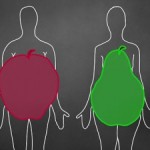How to Use the Glycemic Index of Foods and Ways to Avoid Choices That Are High on It
One of the easiest ways to lower one's exposure to foods that are high on the glycemic index of foods is to avoid as many sugary foods as possible. Sugar ranks high on the GI. Sugar is turned into glucose very quickly once consumed and enters the bloodstream rather rapidly. As a result, those who are looking to avoid foods high on the glycemic index of foods should consider finding ways to avoid as much sugar as is realistically possible.
Let's cut to the chase... sugar is bad for you. The scientific evidence supporting this claim is nothing short of overwhelming. If you want to improve your health, cutting back on the sugar is a great place to start. Diabetics, of course, realize this fact. Many often consult the glycemic index of foods as part of their dietary strategy to control their blood sugar levels.
We often consume more sugar than we realize through two paths in particular. One path is the sugar that is often used in coffee and tea. By simply reducing and eventually eliminating this source of sugar, one can take a step toward eating lower on the glycemic index of foods . A word of caution, however, many sugar substitutes have been found to cause cancer in lab animals and should be avoided. Natural sweeteners, such as wild and organic honey, are far superior substitutions.
Foods that are Deceptively High on the Glycemic Index of Foods
Another major source of sugar, one that has received a good deal of attention in recent years, is that of soft drinks. The amount of sugar hidden in many soft drinks, fruit juices, "sports drinks" and even "teas" can be nothing short of staggering. Often this sugar is hidden in the form of splitting bottles into bizarre serving portions such as 1.5 or 2.3 servings, and so on. This effectively tricks busy consumers into believing that they are consuming less sugar and fewer calories than they believe they are drinking. Those wishing to eat lower on the glycemic index of foods certainly need to be aware of this trick. As always, reading labels carefully is half of the battle.
Like the sugar in coffee, tea and packaged drinks, snacks are another danger zone. Replacing high sugar content, chemical and preservative laden snacks with natural and healthy foods that are also low on the glycemic index of foods is an obvious move. Foods such as nuts, dried fruits and berries make a good deal of sense. By putting together your own snack packs, you are avoiding potential traps. Often a good deal of sugar is added to snacks that one would think would be devoid of sugar. A couple of good examples are fruit roll-ups and peanut butter. Naturally, one might believe that there would not be a good deal of sugar added to these products, but unfortunately, this is not always the case. Often these products are another place where large amounts of sugar can lurk.
Sugar is your enemy where the glycemic index of foods is concerned. Reading labels and not making any assumptions about what is or is not in your food is a big step in the right direction.
-
Three Non-Food Weight Loss Tips to Motivate the Dieter
Ultimately, weight loss can only be achieved when calorie intake is le
-
Positive Weight Loss Approach
You may delay, but time will not. - Benjamin Franklin30), act fast! CD
-
Secrets to Dieting and Choosing the Right Plan
In today抯 world, weight is a major topic
-
Steps To Make Your Stomach Smaller
If you want to make your stomach small, you should know the right step
-
Eating Behaviors Most Favourable To Great Slimming
Ever heard the catchphrase, ‘You are what you eat’? Undoub
-
What To Do Once You Finally Reach Your Goal Weight
- DON'T MISS
- Abdominal Weight Loss. . . Losing Fat From Your Middle
- Cellulite Treatment Creams, Potions and Age Defying Lotions?
- 10 Ways To Lose 10 Pounds Without Even Trying
- Muffintop: The New Feminine?
- Weight Loss Tips To Shed Excess Pounds Fast
- How To Lose Weight Without Exercise
- Healthy And Quick Weight Loss - Rapid Weight Loss For Older People
- Panic After WLS Im Succeeding At Weight Loss Now What
- Essentials Of Hypnosis For Weight Loss
- Simple, Effective and Successful Weight Loss Tips




